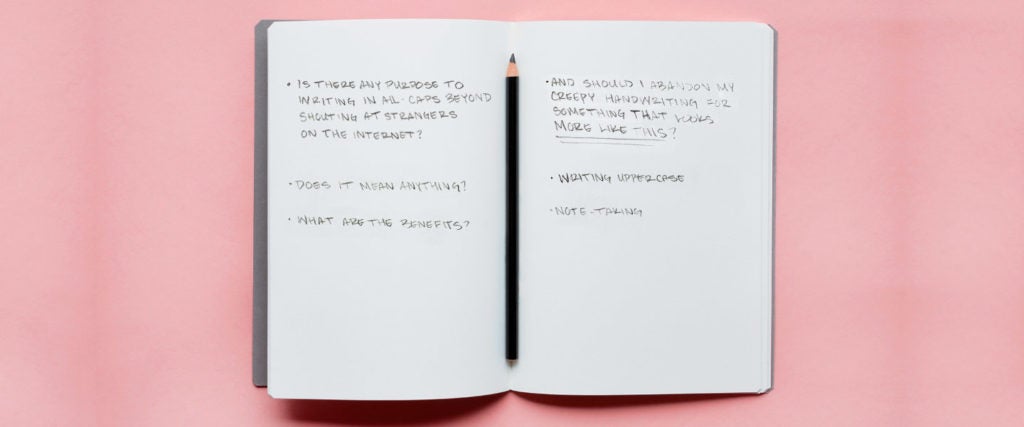My handwriting ensures that no one but me will ever be able to decipher what I’ve written, and sometimes not even I can do so. It’s the anxious scrawl of a serial killer raccoon who sends cryptic letters to the press, hoping to be caught yet foolishly confident that he won’t be. As such, no handwriting brings me jealousy quite like that of the all-caps writer. It’s a neat, bold script, casual while still functional. Beyond aesthetics, though, does it really serve any purpose?
Debating the utility of handwriting in 2021 seems trivial. Can the practice of interpreting one’s handwriting for insights have any legitimacy when so many of us barely use it at all?
When it comes to writing in all-caps, maybe.
As Wired discussed in 2019, our perception of all-caps writing is now entirely dictated by our perception of all-caps text. Surely the typewriter gave most people some experience with all-caps, but on our phones and online, all-caps is entirely commonplace. It can mean anger or urgency, but by and large, it’s just an excited form of internet-speak.
Beyond emotional emphasis and the complete blending of our on and offline lives, there is still potential utility to writing in all-caps with pen and paper. According to this blog from a children’s typing course website, writing in caps is useful for people with various reading and writing differences like dyslexia and dysgraphia. Lower case letters can be more challenging for some people to write, and the spacing and size upper case letters require can be easier to both read and write.
Even for people without these issues, the ease of capitalization in reading and writing isn’t lost. Among those who write in all-caps by habit, the process likely doesn’t require much thought. However, were someone more accustomed to writing in upper and lower case fonts than to writing in all-caps, the process may need more intention and time. As such, taking notes in all-caps could help with memorization. Note-taking by hand, rather than digitally, is associated with a much higher retention of information and this is particularly true when the note-taking can be considered “active,” rather than passive transcription. Switching one’s handwriting to all-caps could be one way to make the experience more active.
Altogether, though, there’s not much evidence to suggest that those clean block letters of all-caps writing are inherently better than my menacing scrawl. Considering that I live and die by the keyboard, I’m not going to worry much about it. I will, however, continue to be jealous of those for whom tidy, all-caps writing comes naturally.

